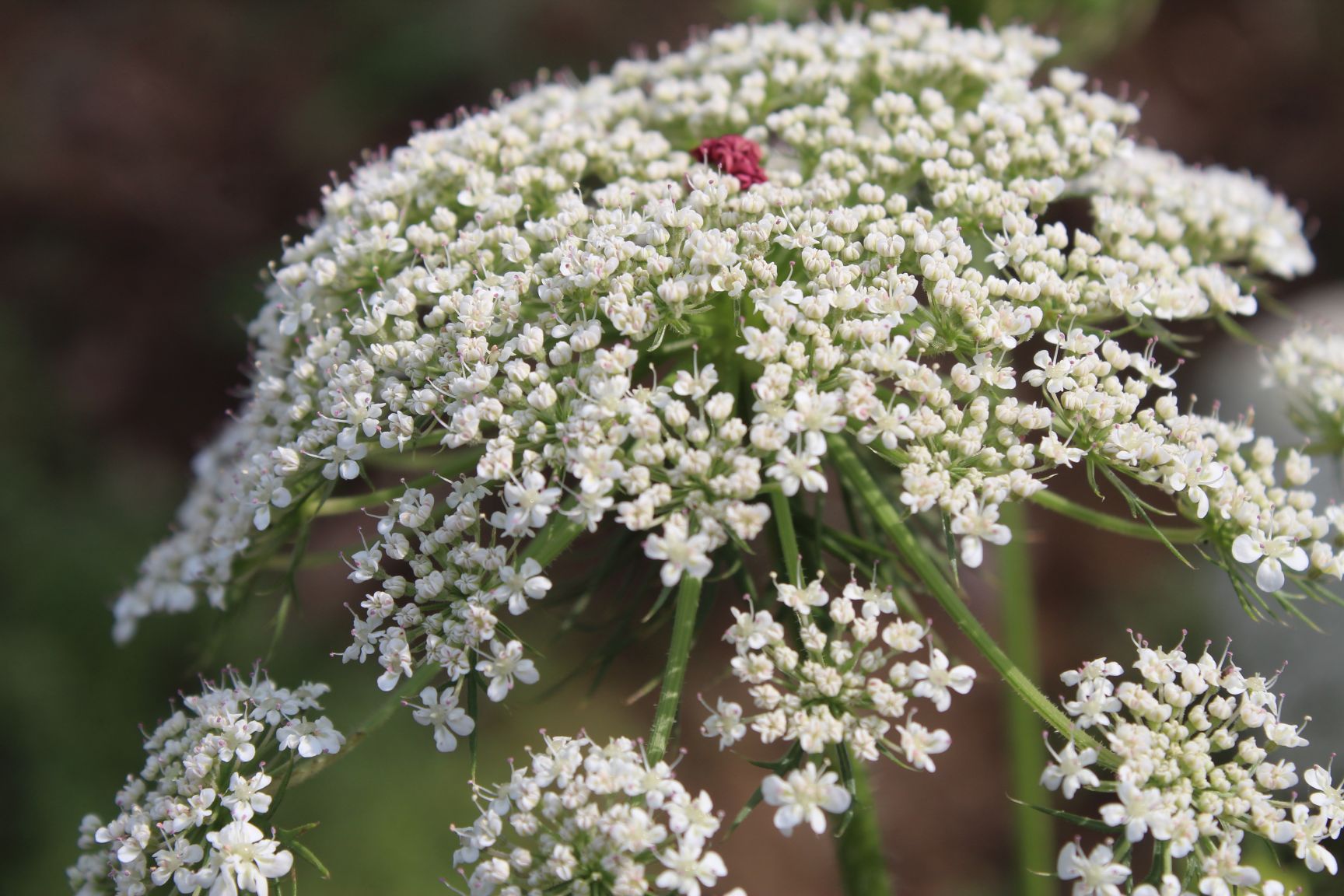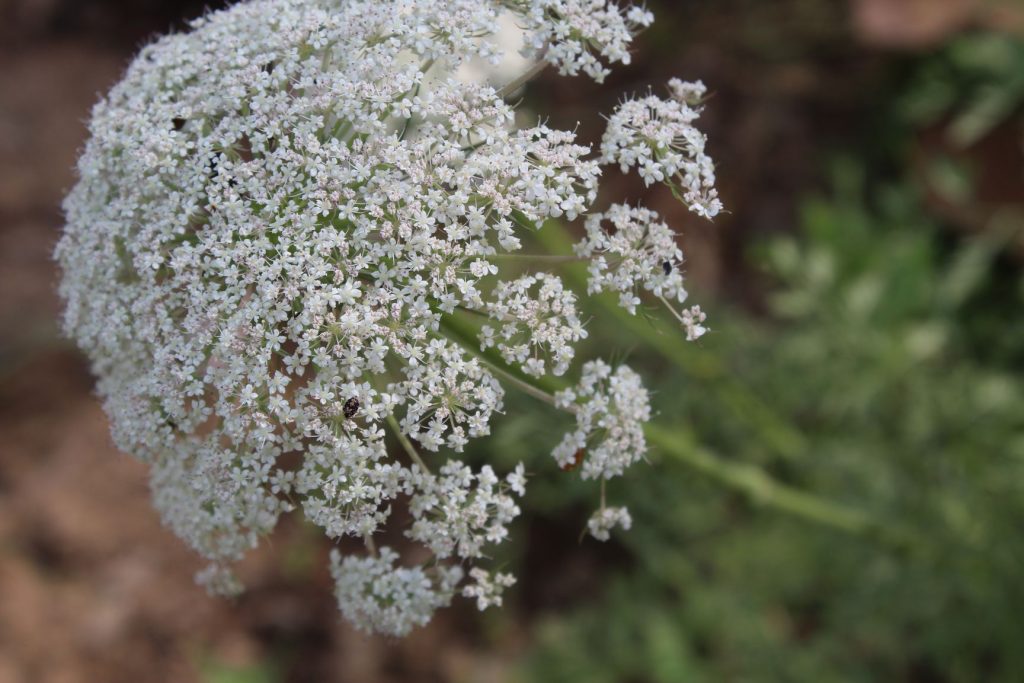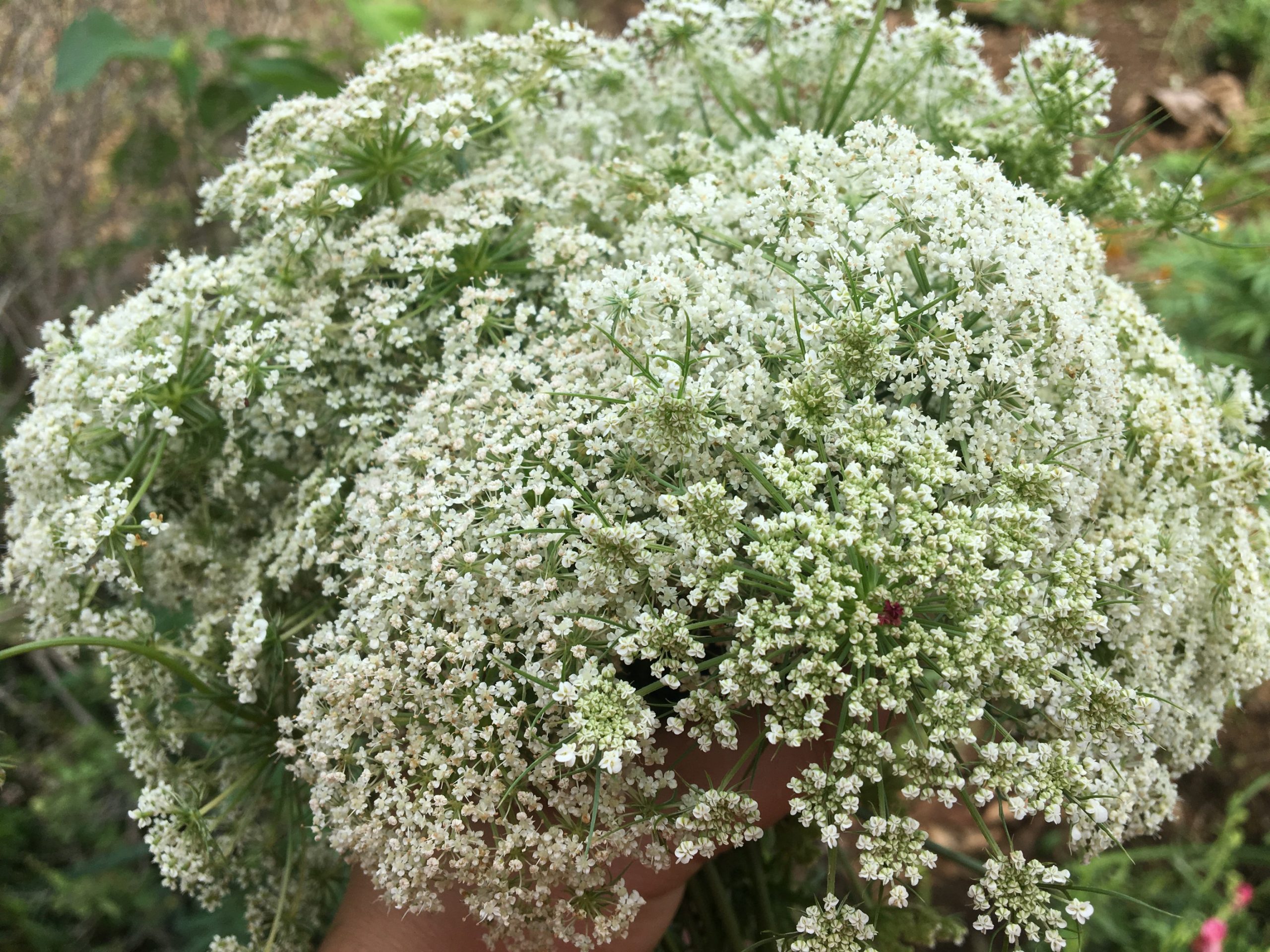Queen Anne’s lace, Daucus carota (Family Apiaceae), also known as wild carrot, is a common sight in dry fields, roadside ditches, and open areas. There are many explanations for the origin of this common name, including the flower’s resemblance to the lace that was fashionable around the time of the British monarch, wife of King James I; because people thought it resembled Queen Anne’s lace headdress; 18th-century English courtiers used the flowers as “living lace;” and supposedly because Queen Anne challenged her ladies-in-waiting to a contest to see who could produce a piece of lace as beautiful as the flower, but none could rival her own efforts.
Its flowers are white and sometimes pink. Being related to the carrot, it has a carrot-like root that even smells like a carrot. Queen Anne’s lace is a relatively tall plant measuring approximately 30-36 inches in height. This well-known wildflower is easily identified by its flat-topped cluster of small flowers and fern-like leaves.
It is also called wild carrot because this is the European plant that cultivated carrots were developed from. It was brought to North America with the colonists as a medicinal plant and is now naturalized throughout the continent.

How to Grow Queen Anne’s Lace Plants
Growing Queen Anne’s Lace is all too easy. Its tiny seeds are easily spread by the wind, and it quickly spreads around the landscape.
All it takes to add them to your field is to spread a few seeds around. Next year, you will have plenty. If you want some for a garden setting, spread the seeds in the location you have chosen. They require little attention.
This plant is prolific in spreading its seeds by the wind. It can be found growing wild along roadsides and in fields almost anywhere.
Queen Anne’s Lace will thrive in poor soils and dry conditions. They like full sun.
Insect and plant diseases do not appear to be too common. However, you may experience plant disease problems in wet, humid weather.
Plant Care
Wild Carrot doesn’t require much care, it’s a low-maintenance plant. The water requirements for this plant are quite low, so water it occasionally during times of extreme drought.
It doesn’t need fertilizers.
Plant Identification
Some suggest it is edible cooked, while others say no. This doubt exists because some poisonous look-alikes can be easily mistaken for Queen Anne’s Lace, due to their similarities. These lookalikes include poison hemlock (Conium maculatum), water hemlock (Cicuta spp.), and fool’s parsley (Aethusa cynapium).


Make sure you know what you are looking at before touching and especially before eating. Poison hemlock has a spotted stem, while Queen Anne’s lace is green, and water hemlock grows in wet areas, while wild carrot prefers dry locations. A good way to differentiate between wild carrot and its poisonous look-alikes is to have a good sniff. Queen Anne’s lace leaves smell strongly of carrot.


Uses
- Queen Anne’s Lace has been used as an antiseptic diuretic for the treatment of skin diseases, cystitis, and prostatitis.
- The seeds of the plant can help to wash out urinary stones.
- The roots have been used as antacids, and a poultice of roots to relieve itchy skin.
- It is an aromatic plant. Its volatile oil soothes smooth muscle cramping, helps expel gas and has antiseptic properties.
- It increases urine output and helps to flush out toxins from the body.
- It stimulates circulatory blood flow throughout the body.
Beautiful on its own in a vase or as a bouquet filler, in a bed by itself, or mixed in with other wildflowers, Queen Anne’s lace is a versatile plant.

Im grateful for the article.Thanks Again. Will read on…